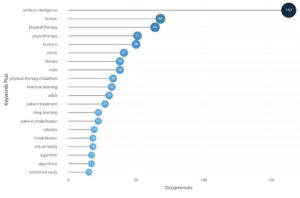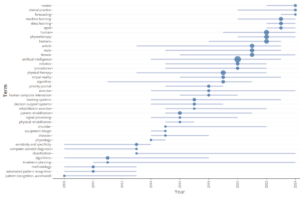Knowledge Discovery on Artificial Intelligence and Physical Therapy: Document Mining Analysis
Introduction
In the realm of healthcare, Artificial audemars piguet replica watches Intelligence (AI) and Physical Therapy (PT) are converging to create transformative changes in patient care. This article delves into how AI-enhanced tools best replica watches uk and methods are revolutionizing physical therapy practices, improving patient outcomes through precision and personalized care.
The Rise of AI in Physical Therapy
AI’s role in physical therapy has grown exponentially, driven by advancements in technology and an increasing need for more efficient and breitling Replica effective rehabilitation methods. AI applications in PT range from robotic assistance and virtual reality simulations to advanced algorithms that predict patient progress and optimize treatment plans.
Understanding the Impact of AI on Physical Therapy
AI technologies offer several benefits in physical therapy, including:
- Enhanced Diagnostic Accuracy: AI algorithms help in the accurate assessment of patient conditions, enabling targeted therapies.
- Personalized Treatment Plans: Machine learning models analyze vast amounts of patient data to tailor rehabilitation programs to individual needs.
- Improved Patient Engagement: Virtual reality and gamification increase patient motivation and engagement during therapy sessions.
- Efficient Resource Management: AI streamlines workflows by automating administrative tasks, allowing physical therapists to focus more on patient care.
Exploring Key Technologies
- Robotics: AI-driven robotic systems provide support in performing precise physical movements, aiding in the recovery of motor functions.
- Wearable Technology: Sensors and wearables track progress in real-time, providing therapists with detailed feedback on patient performance and improvement.
- Virtual Reality (VR): Immersive VR environments simulate real-life challenges and activities, offering safe, controlled settings for rehabilitation.
- Tele-rehabilitation: AI facilitates remote therapy sessions, making physical therapy accessible to those who cannot frequently visit healthcare facilities.
Deep Diving into Data Mining and AI in PT
Recent studies, including those documented in the provided material, show a surge in the publication of research related to AI in physical therapy. Data mining techniques are pivotal in extracting useful patterns and knowledge from large datasets within this field. These insights help refine algorithms that forecast treatment outcomes and customize rehabilitation exercises.
Challenges and Ethical Considerations
While AI presents significant advancements in physical therapy, it also brings challenges such as data privacy, the need for high-quality data sets, and the potential reduction of personal interaction between patients and therapists. Addressing these concerns is crucial for the ethical integration of AI in clinical settings.
Future Trends and Predictions
The future of AI in physical therapy looks promising with ongoing research focused on enhancing machine learning models, expanding the use of AI in various PT specializations, and improving the integration of AI tools in routine clinical practices.
Conclusion
AI in physical therapy represents a frontier in healthcare that promises to enhance the quality of life for patients worldwide. As technology advances, it is imperative for healthcare professionals to embrace these changes, ensuring they are well-equipped to meet the evolving demands of patient care.
Further Resources for more detailed insights and research findings, readers are encouraged to explore the full texts available through the following links:
Graphical Analysis
![]() Figure 1: Five steps of data collection, analysis, data processing, normalization, and clustering processes on data mining analysis with a Bibliometric tool.
Figure 1: Five steps of data collection, analysis, data processing, normalization, and clustering processes on data mining analysis with a Bibliometric tool.
 Figure 2: Most frequency words in 174 published articles between 2008 and 2024.
Figure 2: Most frequency words in 174 published articles between 2008 and 2024.
 Figure 3: Co-occurrence network visualization from Network layout (Kamada & Kawai algorithm).
Figure 3: Co-occurrence network visualization from Network layout (Kamada & Kawai algorithm).
 Figure 4: Network clustering visualization with a Walktrap distance algorithm of 46 subdisciplines from 174 cited documents.
Figure 4: Network clustering visualization with a Walktrap distance algorithm of 46 subdisciplines from 174 cited documents.
 Figure 5: Trend research from the words’ frequency from 2008 to 2024.
Figure 5: Trend research from the words’ frequency from 2008 to 2024.
Conclusion
The convergence of nanotechnology and artificial intelligence is set to transform the landscape of physical therapy. By harnessing the power of these technologies, healthcare professionals can offer more precise, effective, and personalized treatments, ultimately improving the quality of life for patients across the globe.
Further Reading and Resources
For a deeper understanding of the technologies discussed and their applications in physical therapy, readers are encouraged to explore the full text and PDF versions of the latest research findings.
